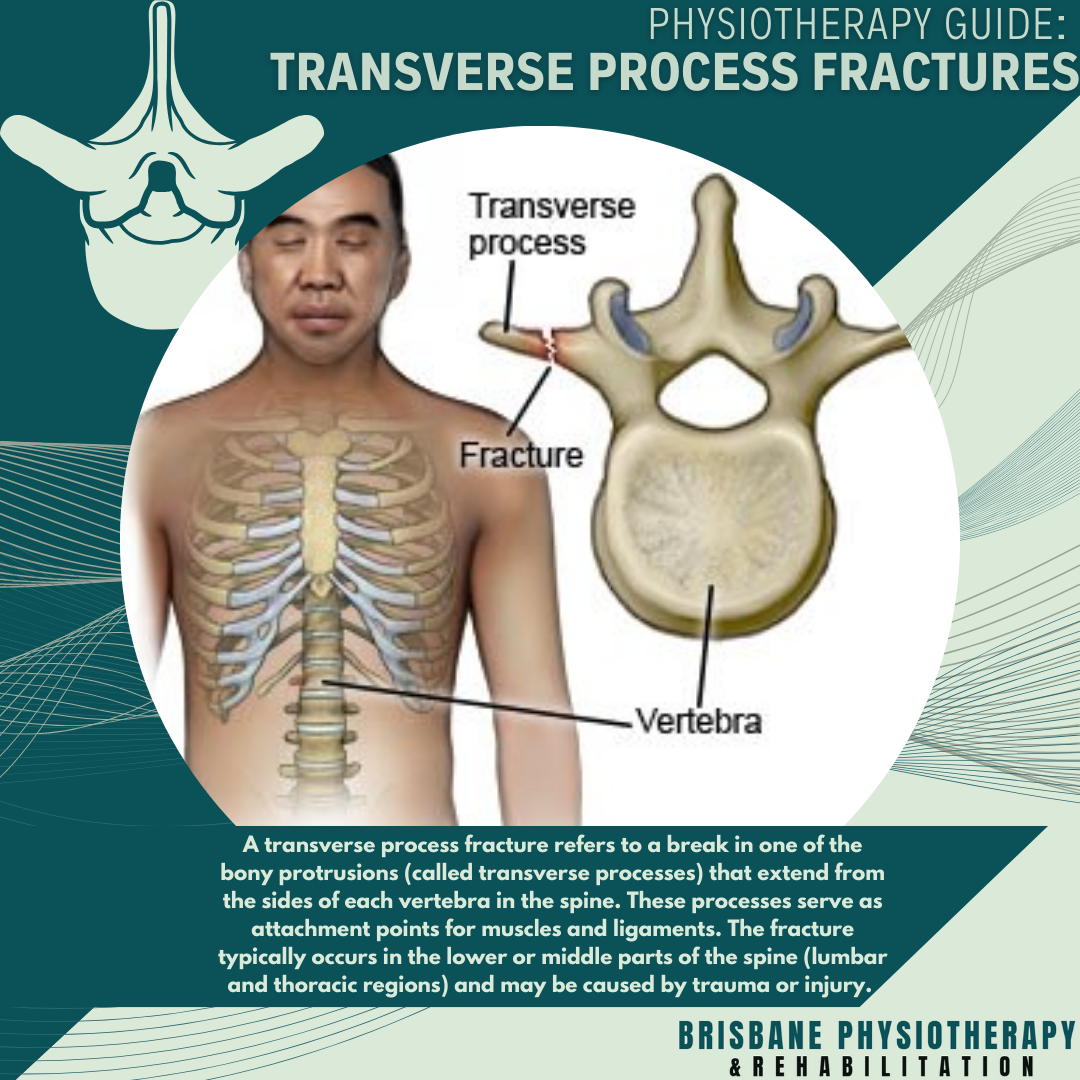Physiotherapy Guide: Transverse Process Fractures
A transverse process fracture refers to a break in one of the bony protrusions (called transverse processes) that extend from the sides of each vertebra in the spine. These processes serve as attachment points for muscles and ligaments. The fracture typically occurs in the lower or middle parts of the spine (lumbar and thoracic regions) and may be caused by trauma or injury.
Symptoms of a Transverse Process Fracture
Symptoms of a transverse process fracture can vary based on the severity of the injury but may include:
Localised Pain: The most common symptom is pain over the affected area of the spine, often aggravated by movement, bending, or twisting.
Swelling and Bruising: Swelling around the fractured area, and sometimes bruising, can occur.
Muscle Spasms: The muscles surrounding the injured area may spasm in response to the injury.
Limited Range of Motion: Difficulty in moving the back due to pain and muscle tightness.
Tenderness: Direct pressure over the site of the fracture will typically cause significant discomfort.
Radiating Pain: In some cases, if nerves are affected by the injury, pain may radiate to the hips or legs, though this is less common.
Causes of Transverse Process Fracture
The main causes of transverse process fractures include:
Trauma: Direct impact such as in a car accident, fall, or sports injury.
Excessive Force: Sudden twisting, bending, or lifting heavy objects can sometimes cause stress on the spine, resulting in a fracture.
Bone Weakness: Conditions like osteoporosis or other diseases that weaken bones can make the spine more susceptible to fractures.
High-impact activities: Athletes, especially in contact sports like football, are at greater risk due to the physical demands and risk of falls or collisions.
Physiotherapy Treatment for Transverse Process Fracture
The goal of physiotherapy for a transverse process fracture is to manage pain, restore mobility, and strengthen the surrounding muscles to support the spine. Treatment strategies may include:
Pain Management:
Modalities: Techniques like heat/cold therapy and electrical stimulation (TENS), can help reduce pain and inflammation.
Manual Therapy: Gentle manipulation or mobilisation of the spine can help ease pain and improve range of motion.
Restoration of Movement:
Gradual exercises to improve flexibility and restore the normal movement of the spine without aggravating the injury.
Gentle stretching and mobility exercises focused on the lower back and surrounding muscles.
Strengthening:
As the fracture heals, strengthening exercises for the core and back muscles are crucial to provide better stability and prevent further injury.
These exercises may include isometric exercises (muscle contraction without movement) and low-impact strengthening routines, focusing on the abdominal, pelvic, and back muscles.
Postural Training:
Improving posture can reduce strain on the spine and aid in the recovery process. Physiotherapists may provide advice on sitting, standing, and lifting techniques to avoid stressing the injured area.
Education:
Education regarding body mechanics and techniques to protect patient’s spines, can aid in ensuring they don’t re-injure themselves.
Gradual Return to Activity:
Once healing is sufficient, physiotherapy helps to ensure a safe return to activities, with gradual loading and increased activity levels as tolerated.
When to Seek Medical Attention
While a transverse process fracture can often heal with conservative treatment (like physiotherapy and rest), it's essential to seek specialist medical attention if:
Symptoms worsen or don't improve with treatment.
Numbness, tingling, or weakness in the limbs develop, which could indicate nerve involvement.
Difficulty breathing or chest pain is experienced, as it may indicate a more severe injury or complications.
As always, it’s crucial to follow the guidance of your healthcare provider, as the specific treatment plan may differ depending on the individual and the severity of the injury.
